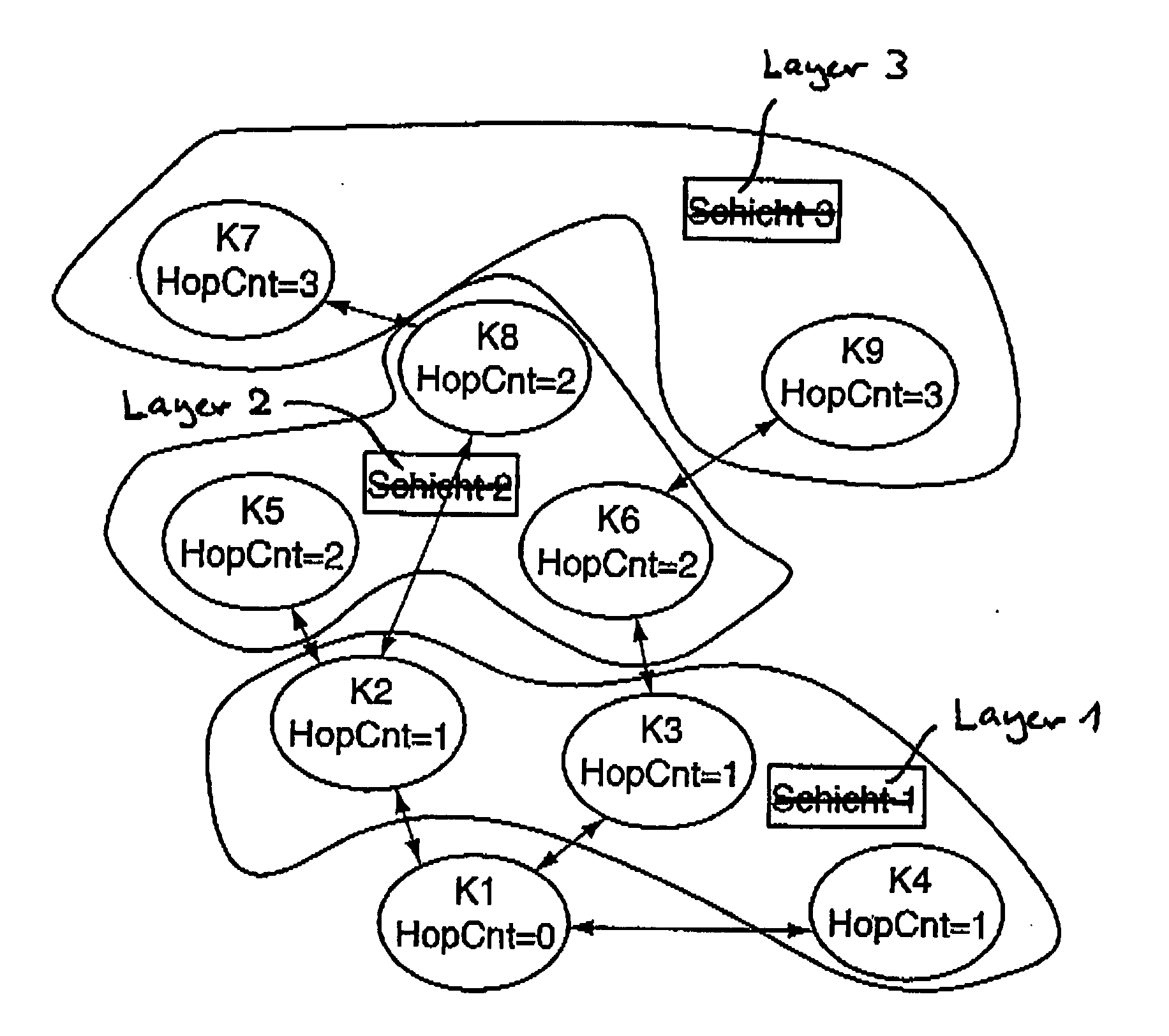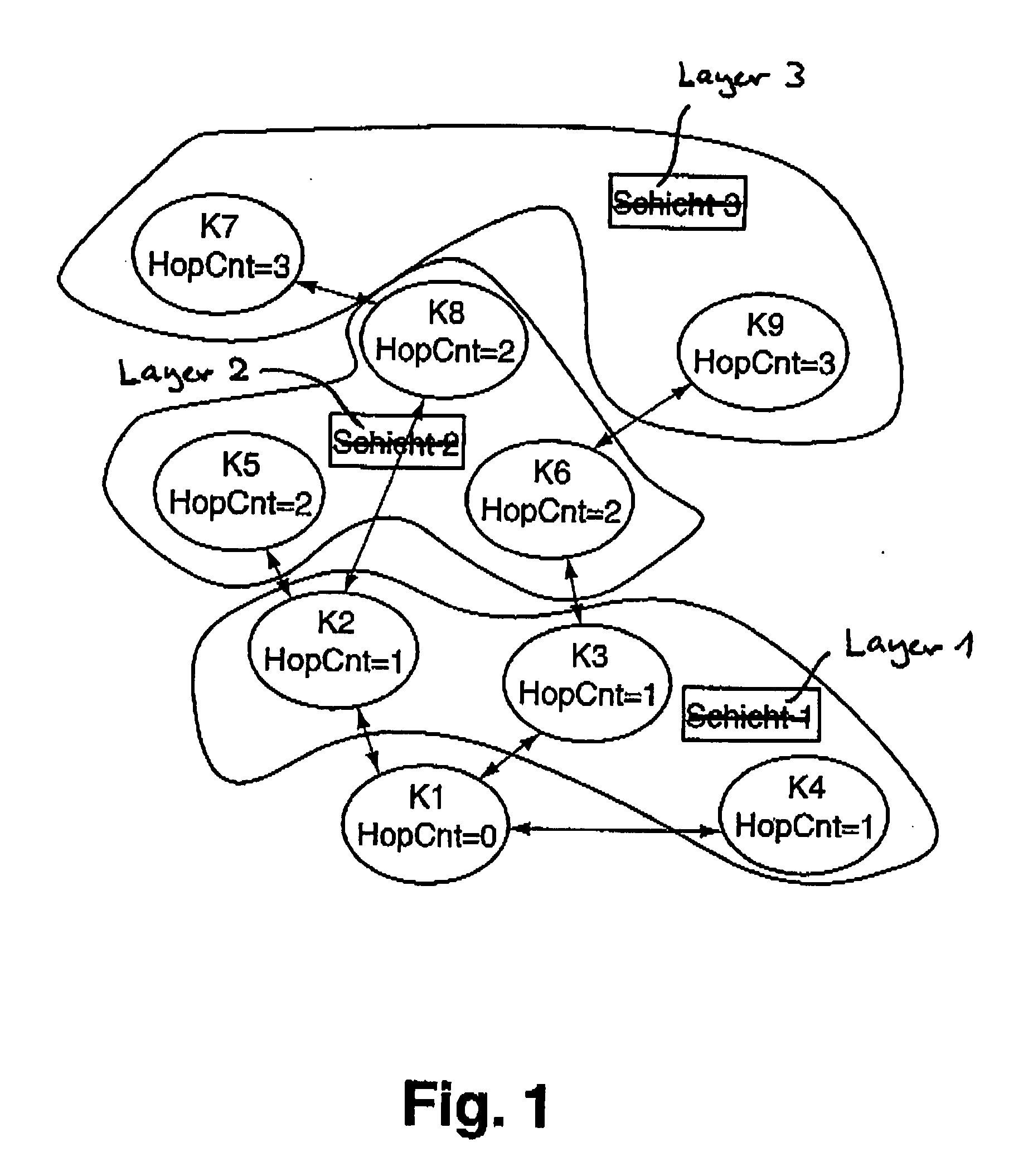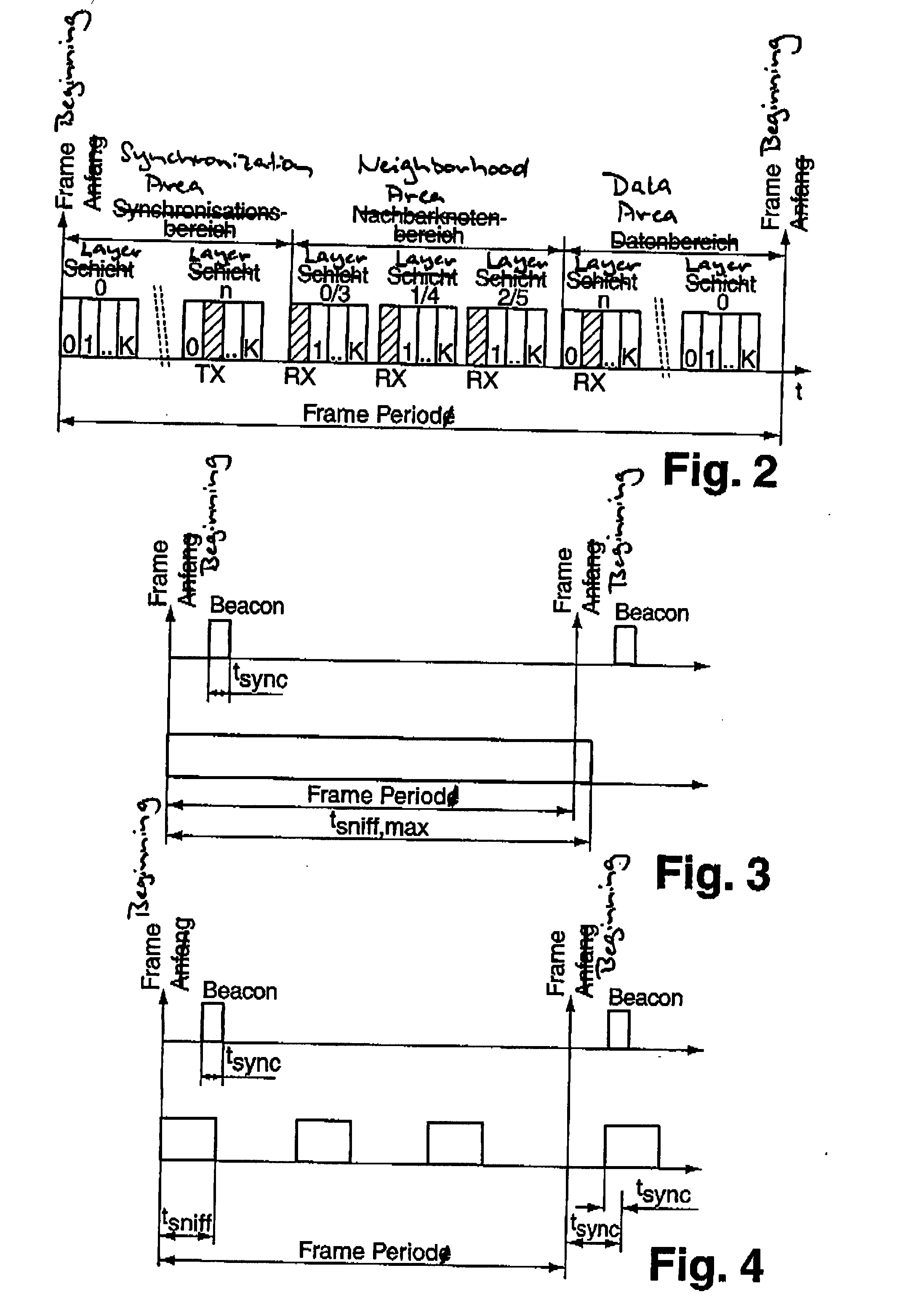Method for Synchronization and Data Transmission in a Multi-Hop Network
a multi-hop network and synchronization technology, applied in the direction of synchronisation arrangement, radio transmission, electrical equipment, etc., can solve the problems of high power consumption large computation requirements of individual network nodes, and rendering the “hidden nodes"
- Summary
- Abstract
- Description
- Claims
- Application Information
AI Technical Summary
Benefits of technology
Problems solved by technology
Method used
Image
Examples
Embodiment Construction
[0007]The object of the present invention is solved with the method according to claim 1. Advantageous embodiments of the method are the subject matter of the subordinate claims or can be drawn from the following description and the preferred embodiments.
[0008]The invented method is distinguished by the following process steps:[0009]a) Transmission of a synchronization signal by the central node or a previously synchronized node, with a slot in the frame of the synchronization signal, the so-called beacon slot, determined by the node transmitting the synchronization signal being assigned a data package, the so-called beacon, and at least the hop count value of the transmitting node being transmitted in the frame of the synchronization signal, and, for all the previously synchronized neighbor nodes of the transmitting node, which are known to the transmitting node, transmission by the transmitting node of the respective beacon slots and the hop count values in the frame of the synchr...
PUM
 Login to View More
Login to View More Abstract
Description
Claims
Application Information
 Login to View More
Login to View More - R&D
- Intellectual Property
- Life Sciences
- Materials
- Tech Scout
- Unparalleled Data Quality
- Higher Quality Content
- 60% Fewer Hallucinations
Browse by: Latest US Patents, China's latest patents, Technical Efficacy Thesaurus, Application Domain, Technology Topic, Popular Technical Reports.
© 2025 PatSnap. All rights reserved.Legal|Privacy policy|Modern Slavery Act Transparency Statement|Sitemap|About US| Contact US: help@patsnap.com



